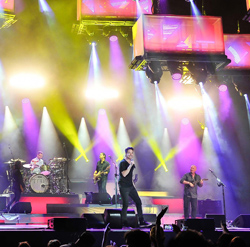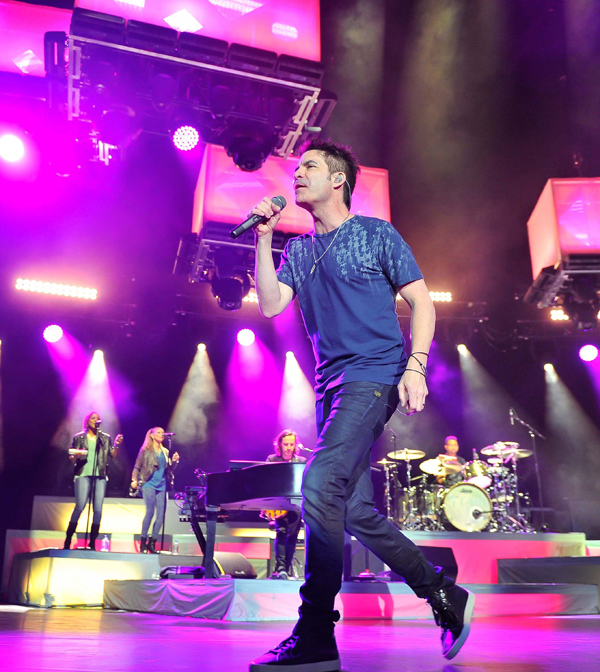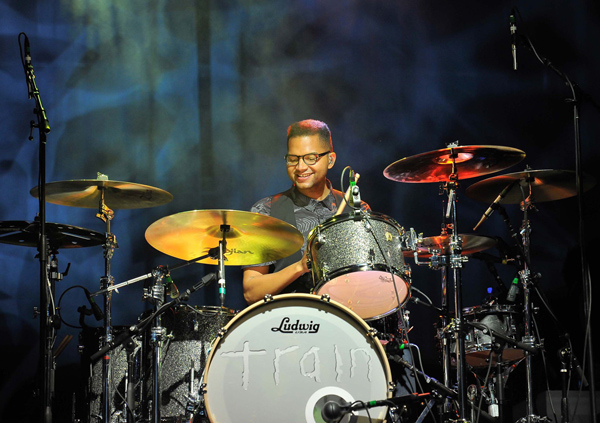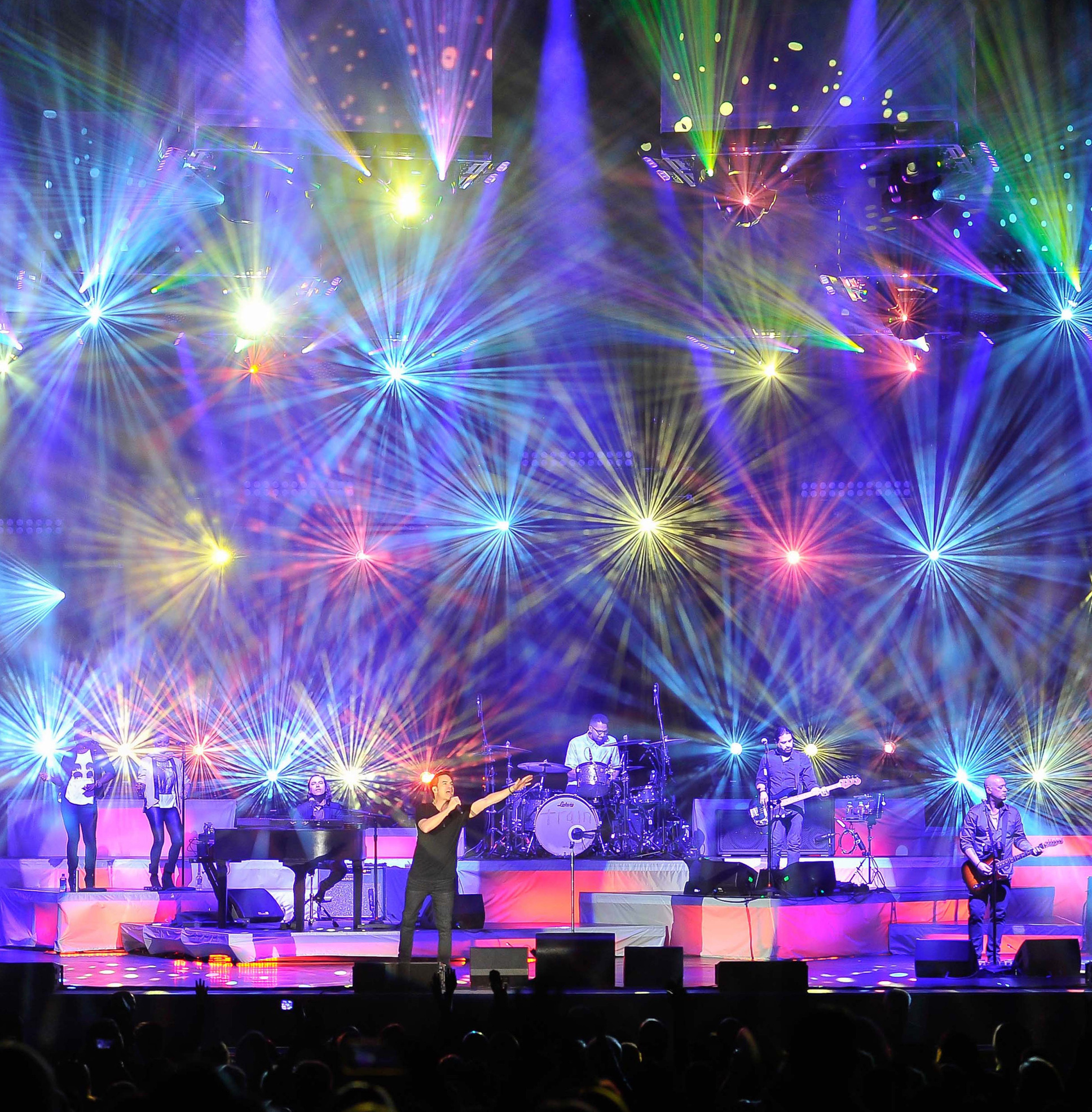
Judicious Uses
Aside from the addition of Lake LM 44 processors for the house loudspeakers, there was no outboard processing for the house on the tour.
Moore felt early on that he wanted to rely upon only that found within the SSL for all of his processing needs, which essentially boiled down to long delays on three or four songs, some slap delay, and long and short reverb – all used for studio-like “producer tricks” that fans have come to expect to hear on certain tunes.
As for compression, in his estimation it’s a handy tool for just leveling things out, used judiciously in places where he’d rather compress an offending frequency than cut it completely. The SSL console’s dynamic EQ section, while not technically a compressor, acted as one and served his purposes nicely.
“Train is a very vocals-oriented band, and people come to the shows wanting to hear the lyrics,” he adds, describing the philosophy underlying his mix. “Going to a show and not hearing the vocals shouldn’t make sense to anyone anyway. All that said, getting our lead singer Pat Monahan front-and-center in my mix with clean intelligibility was my first order of business – I brought everything else up around that.
“I went heavily on drums without being overpowering, as I feel drums make a rock show,” he continues. “If you get a good drum mix going, you’ve won half the battle, everything else can be layered on. Our guitar players have excellent tonality, we have great gear for keys, and our background singers are all on-point.”

Frontman Monahan’s vocal microphone was a wireless Audio-Technica AE5400 large-diaphragm condenser. Guitar and keys player Jerry Becker counted upon a Shure BETA 58A for his vocal duties, as did bass player Hector Maldonado and lead guitarist Jimmy Stafford.
Backing vocalists Nikita Houston and Sakai Smith respectively used Audio-Technica AE5400 and AE6100 mics. Drew Shoals’ drum kit was handled at kick with a classic BETA 91/52A combo, and snare received a side-address A-T AE3000, while hi-hat, ride, and overheads were captured by Earthworks SR25 cardioid condenser mics.
Countryman DI boxes were spread across acoustic guitars, pianos, and synth, as well as a Hammond XK-3 with a Leslie simulator. Present and accounted for onstage, guitar cabinets ranged from a Matchless AC30 to a dual-rectifier Mesa Boogie, and were miked with various combinations of A-T AT4040s and AE3000s, as well as a Shure SM57.
Onstage, both wedges and Sennheiser G3 in-ear systems (with 3-way JHA Audio JH16s in everyone’s ears) were the order of the day. Wedges included 10 d&b M6s buttressed by d&b audiotechnik Q1 side fills and Q-SUBS. A Porter and Davies BC2 drum thumper additionally made the cut to provide Drew Shoals with some extra kick.
Pulling Together
Working from behind his own SSL Live L500, monitor Rob Greene freely admits that his stage was far from a quiet place.
“I had to use each room I was in to my advantage, and mix specifically to that room,” he says. “I was dealing with different musicians and different zones, but I still had to have an even, consistent coverage across the entire stage. I mixed around FOH, and what I mean by that is I didn’t put a lot of low frequency through my mixes because I was getting that energy from the PA.
“I kept the wedges punchy and clear, and of course I didn’t want to get any low-end feedback that could take off. When the PA got louder, I had to make my wedges louder, but all in a fashion that would work with the room and what it would allow. I used the house to my advantage, and when Pat Monahan hears the PA in that context, he likes it. It’s almost like a natural decay of his voice that he hears.”
Moore concurs that everyone – himself, the techs, Greene, and the band – all worked hard and pulled together to make the stage part of their overall sound. “We put the amps in the right locations,” he adds, “baffled them if we had to depending upon the venue, really did everything we could together to make this work. That’s how every aspect of the show was, and will continue to be going forward. It’s all for one to achieve the best possible sound.”
After a brief break, Train’s tour schedule resumes late this year with dates in Greensboro, NC, Los Angeles, and San Francisco. And a Train cruise scheduled to leave out of Miami next February is already sold out.
Gregory A. DeTogne is a writer and editor who has served the pro audio industry for the past 32 years.


